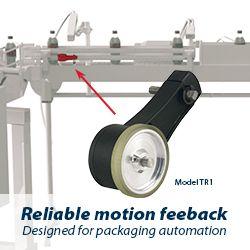Wafer Handling Robots: Driving Precision and Efficiency in Semiconductor Manufacturing
The global wafer handling robots market is estimated to grow at a CAGR of 8.5% from 2023 to 2031, reaching US$ 2.7 billion by the end of 2031
The semiconductor industry is undergoing rapid advancements, driving the need for automation and precision in wafer handling processes. Wafer handling robots play a crucial role in semiconductor manufacturing, ensuring high accuracy, reduced contamination, and increased production efficiency. As demand for semiconductor chips rises, the wafer handling robots market is poised for significant growth between 2023 and 2031.
The wafer handling robots market is poised for significant growth, with projections indicating an increase from US$ 1.3 Bn in 2023 to US$ 2.7 Bn by 2031, reflecting a compound annual growth rate (CAGR) of 8.5% during this period.
The Concept of Wafer Handling Robots
Wafer handling robots are specialized robotic systems designed to transfer, position, and process semiconductor wafers within a cleanroom environment. These robots operate in various stages of semiconductor fabrication, including wafer inspection, lithography, and etching. They minimize human intervention, thereby reducing contamination risks and enhancing production throughput. Wafer handling robots come in different configurations, including single-arm and dual-arm designs, to cater to specific industry needs.
Benefits of Wafer Handling Robots
1. Precision and Accuracy - Wafer handling robots ensure high precision in transferring wafers, minimizing misalignment and breakage.
2. Contamination Control - Operating in ultra-clean environments, these robots reduce the risk of particle contamination, a critical factor in semiconductor manufacturing.
3. Increased Productivity - Automated handling accelerates production cycles, leading to higher throughput and reduced operational downtime.
4. Cost Efficiency - By minimizing manual errors and improving efficiency, wafer handling robots contribute to long-term cost savings in semiconductor manufacturing.
5. Scalability - These robots support the growing demand for semiconductor components by enabling seamless integration with modern fabrication processes.
Challenges and Considerations
1. High Initial Investment - The deployment of wafer handling robots requires substantial capital, including installation and maintenance costs.
2. Complex Integration - Integrating robotic systems with existing semiconductor fabrication equipment can be complex and requires specialized expertise.
3. Technological Advancements - Rapid changes in semiconductor technology necessitate frequent upgrades, posing a challenge for manufacturers to keep pace.
4. Supply Chain Disruptions - Shortages in semiconductor components and global supply chain constraints may impact the adoption rate of wafer handling robots.
Future Outlook and Opportunities
The wafer handling robots market is expected to witness robust growth from 2023 to 2031, driven by advancements in semiconductor manufacturing technologies. Key trends shaping the market include:
• Integration of AI and Machine Learning - Enhanced robotics with AI capabilities can improve wafer handling efficiency and predictive maintenance.
• Expansion of 5G and IoT - The rising demand for 5G technology and Internet of Things (IoT) devices will propel semiconductor production, thereby increasing the adoption of wafer handling robots.
• Growth of the Semiconductor Industry in Asia-Pacific - Countries like China, Taiwan, South Korea, and Japan are investing heavily in semiconductor manufacturing, creating significant opportunities for wafer handling robot suppliers.
• Sustainability and Energy Efficiency - Innovations focused on energy-efficient robotics will drive sustainable growth in the market.
Conclusion
The wafer handling robots market is set for substantial expansion between 2023 and 2031, fueled by the growing demand for semiconductor components, advancements in automation, and increasing adoption of AI-driven solutions. While challenges such as high costs and integration complexities exist, ongoing technological innovations and industry investments are expected to drive sustained growth. Companies in the semiconductor ecosystem must adapt to emerging trends to capitalize on the opportunities in this evolving market landscape.
Featured Product

Model TR1 Tru-Trac
The Model TR1 Tru-Trac® linear measurement solution is a versatile option for tracking velocity, position, or distance over a wide variety of surfaces. An integrated encoder, measuring wheel, and spring-loaded torsion arm in one, compact unit, the Model TR1 is easy to install. The spring-loaded torsion arm offers adjustable torsion load, allowing the Model TR1 to be mounted in almost any orientation - even upside-down. The threaded shaft on the pivot axis is field reversible, providing mounting access from either side. With operating speeds up to 3000 feet per minute, a wide variety of configuration options - including multiple wheel material options - and a housing made from a durable, conductive composite material that minimizes static buildup, the Model TR1 Tru-Trac® is the ideal solution for countless applications.
